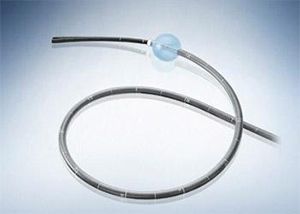Balloon Enteroscopy

Balloon Enteroscopy is an endoscopic technique that allows examination of the small intestine which cannot be easily accessed with standard endoscopy or colonoscopy. This procedure is often performed following abnormalities found at capsule endoscopy or x-ray imaging requiring further investigation. The main advantages of a single balloon enteroscopy includes the sampling or biopsying of small bowel mucosa, for the resection of polyps of the small bowel, treatment of a specific lesion in question and placement of stents or dilatation of strictures of the small bowel. Depending on the indication, enteroscopy may offer patients an alternative to surgery. Enteroscopy can be performed either using an oral (mouth) or rectal approach.
Risks
This procedure has a low (0.2%) risk of serious complications. Potential serious complications include a tear or hole in the lining of the digestive tract called a perforation. Rates of perforations are in the order of less than 1 in 2000 upper endoscopies. Bleeding complications may be treated immediately during the procedure. Delayed bleeding may also occur at the site of a polyp removal up to a week post procedure and a repeat procedure can then be performed to treat the bleeding site. Most bleeding complications settle spontaneously and can be managed endoscopically if required. Other complications include a temporary drop in blood pressure and oxygen saturations. These developments are often a result of overmedication and can be easily reversed if necessary.
